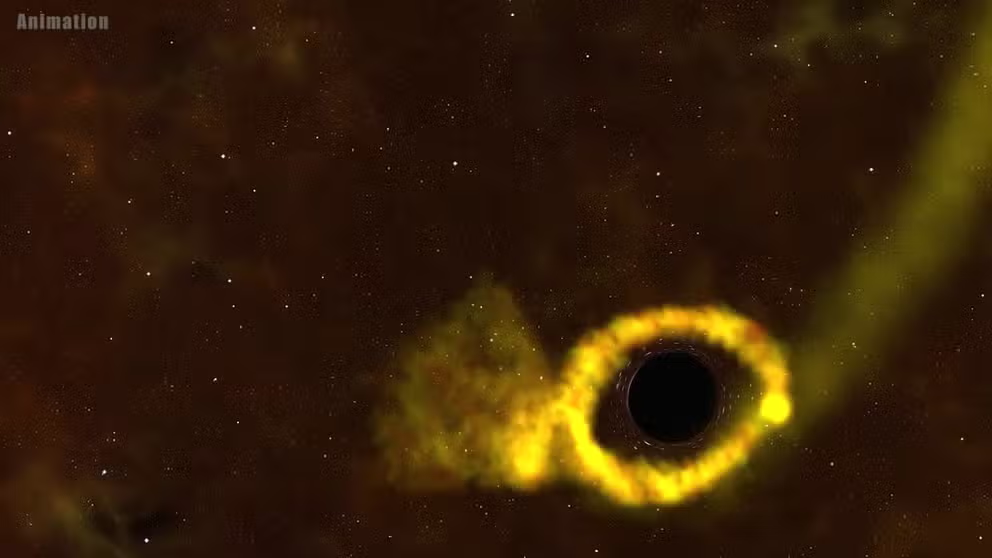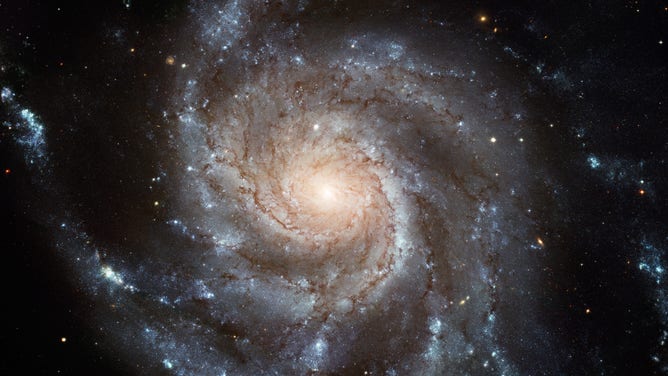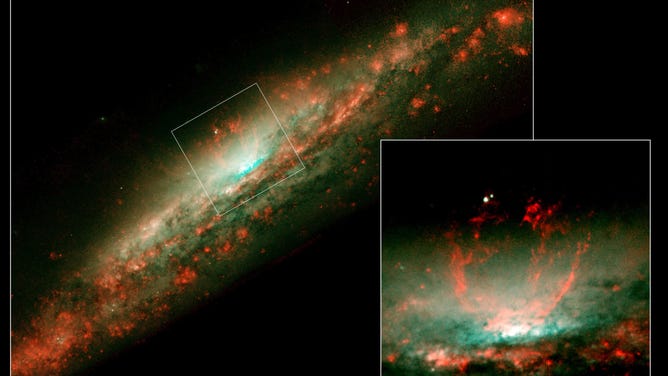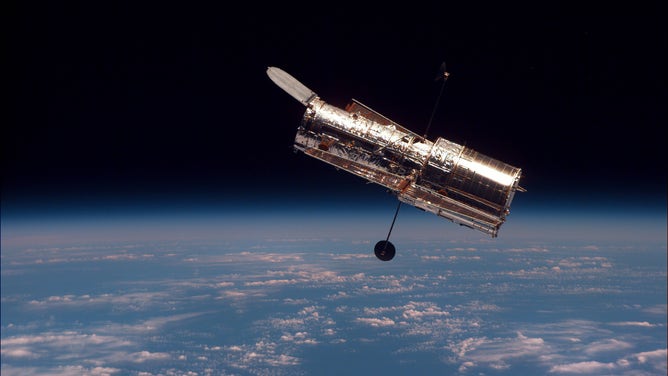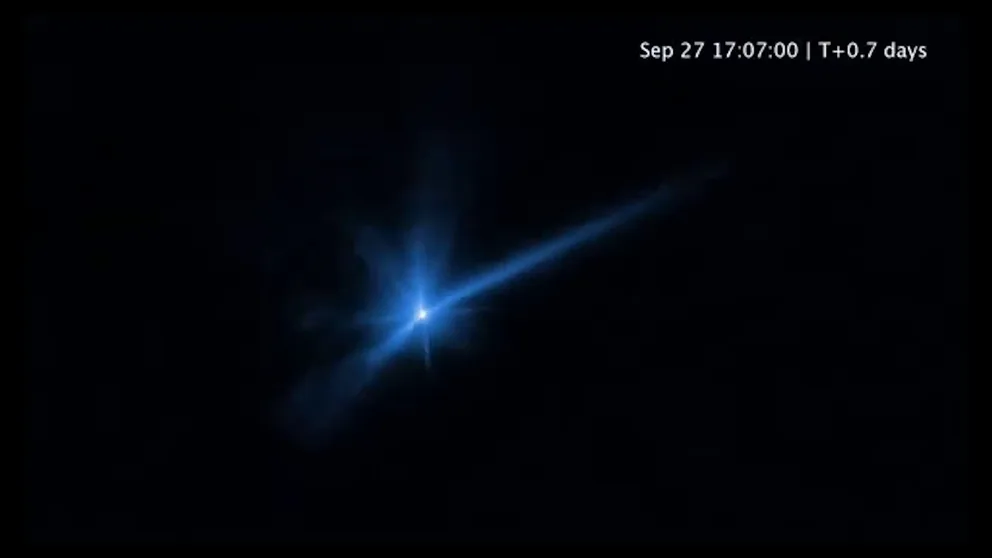Hubble Space Telescope captures dazzling image of interacting galaxies
The extreme brightness is caused by matter whirling into a supermassive black hole at the galaxy's heart, according to NASA.
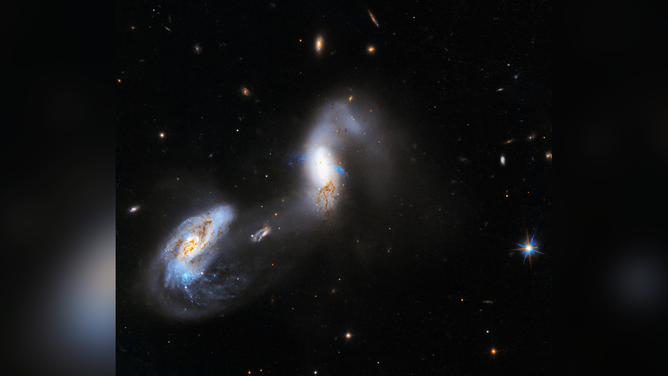
A new image from NASA’s Hubble Space Telescope shows interacting galaxies known as AM 1214-255.
(NASA, ESA, A. Barth (University of California - Irvine), and J. Dalcanton (University of Washington); Processing: Gladys Kober (NASA/Catholic University of America) / NASA)
NASA has released a stunning image captured by the Hubble Space Telescope that shows bright interacting galaxies, known as AM 1214-255.
"Its extreme brightness is caused by matter whirling into a supermassive black hole at the galaxy's heart," NASA said in a news release.
HOW THE TELESCOPE BECAME OUR WINDOW INTO THE UNIVERSE
Hubble Space Telescope used to watch black hole eat a star
Astronomers used Hubble Space Telescope's ultraviolet capabilities to investigate the death of a recently devoured star nearly 300 million light-years away. These events are known as "tidal disruptions."
The telescope was able to observe the galaxy closest to the center as part of a survey studying active galactic nuclei (AGN), which is an extraordinarily luminous central region of a galaxy.
The survey involves compiling a dataset about nearby AGNs that will be used as a resource for astronomers investigating AGN physics, black holes, host galaxy structures and more.
The Hubble Space Telescope has operated in space for over 20 years since launching from Kennedy Space Center in Florida in 1990. Since then, Hubble has captured stunning images and videos documenting things such as black holes, colliding galaxies and more.
Watch: New video shows DART asteroid impact debris from Hubble space telescope
A video NASA released on Wednesday shows the debris caused by the Double Asteroid Redirection Test (DART) mission spacecraft slamming into the asteroid Dimorphos. (Courtesy: NASA / ESA / STScI / Jian-Yang Li (PSI) / Joseph DePasquale (STScI))
The mammoth space telescope also captured images showing debris caused by the Double Asteroid Redirection Test (DART) mission spacecraft slamming into an asteroid.
